What is it about the tribes that makes me travel the ends of the Earth?  Certainly their art, their dances and their customs are endlessly fascinating, but there is more. I think it is also the understanding of the urgency to win the race against time. Here is our last chance to meet face to face the vestiges of our human ancestry, the origins of our common ancient roots.
Certainly their art, their dances and their customs are endlessly fascinating, but there is more. I think it is also the understanding of the urgency to win the race against time. Here is our last chance to meet face to face the vestiges of our human ancestry, the origins of our common ancient roots.  Sadly there are not many places left where ethnic displays go beyond a dance show for the tourists with cheaply made replicas of old costumes. We consider ourselves really lucky that we have still managed to catch a few cultures before they are totally “civilized”.
Sadly there are not many places left where ethnic displays go beyond a dance show for the tourists with cheaply made replicas of old costumes. We consider ourselves really lucky that we have still managed to catch a few cultures before they are totally “civilized”. 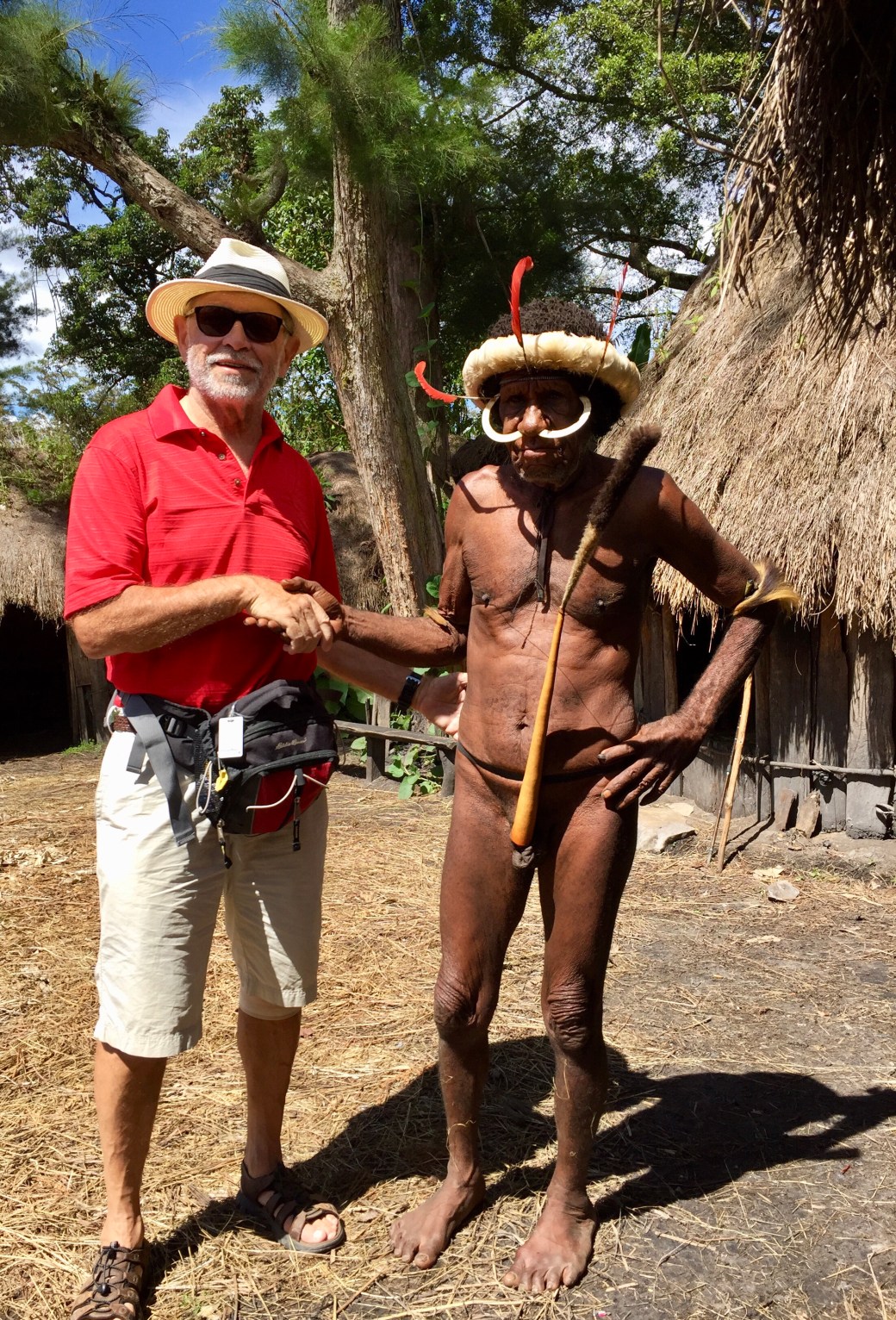 Beliem Valley, Papua
Beliem Valley, Papua 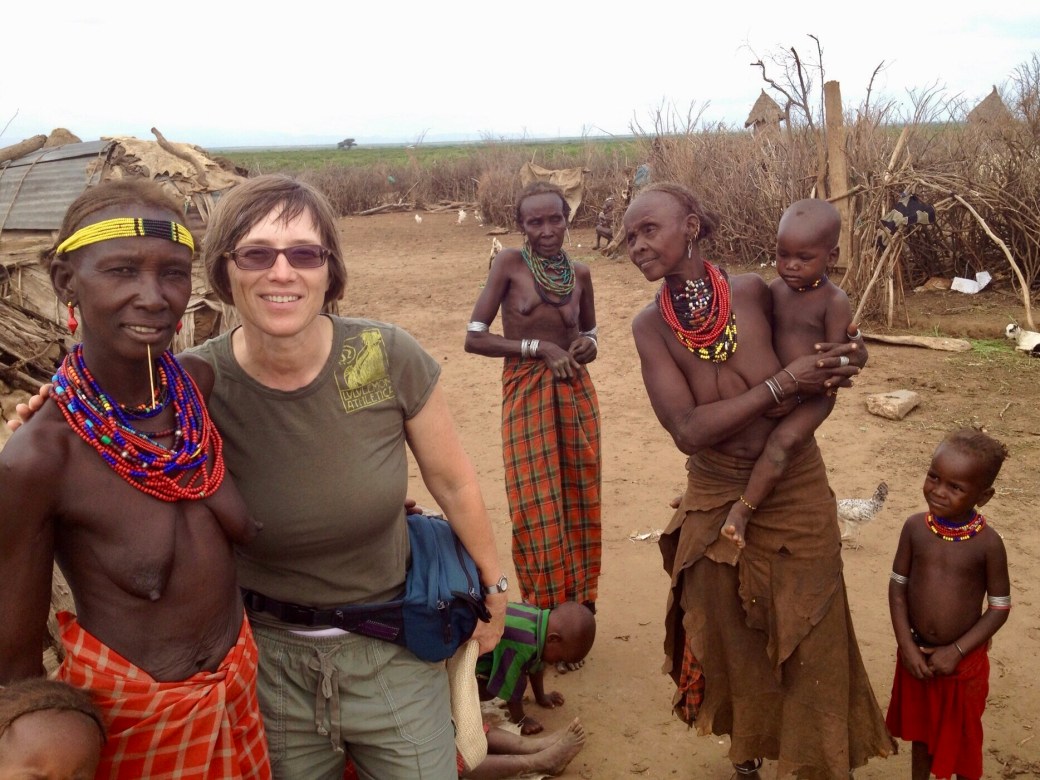 Omo River, Ethiopia
Omo River, Ethiopia
When you get to the places where people still live within their authentic culture, the pull is strong. I recently came across a remarkable British woman, a Margaret Mead of Nagaland. As a young graduate in 1930’s Ursula Graham Bower went to visit a British friend in India and upon her first foray into a Naga village fell in love with the tribe and their way of life. She spent 7 years with them, taking thousands of photographs and even films. During the Japanese invasion in WW II she trained and commanded a force of 150 Naga warriors and was dubbed the Naga Queen.  Interestingly, at the airport on our way out of Nagaland we met an older Canadian couple who used to be missionaries in Kalimantan, Borneo. The wife’s parents came there first and she and her siblings were born in a grass hut. She longingly shared with me some old pictures and told me of the friendships she still maintains amongst the Dayak people from her youth. Within her and Ursula’s lifespan things have changed dramatically. When we visited the Dayaks some years back only a few still lived in their communal longhouses and the tribes of Nagaland seem “tribal” only during their celebrations. In both cases much of that can be attributed to “civilizing” influence of missionaries from North America.
Interestingly, at the airport on our way out of Nagaland we met an older Canadian couple who used to be missionaries in Kalimantan, Borneo. The wife’s parents came there first and she and her siblings were born in a grass hut. She longingly shared with me some old pictures and told me of the friendships she still maintains amongst the Dayak people from her youth. Within her and Ursula’s lifespan things have changed dramatically. When we visited the Dayaks some years back only a few still lived in their communal longhouses and the tribes of Nagaland seem “tribal” only during their celebrations. In both cases much of that can be attributed to “civilizing” influence of missionaries from North America.
While I am very attracted by the romantic notion of living with the “savages”, I must confess that I am probably way too spoiled to live in a grass hut,  with only a fire to keep me warm and its smoke to keep the blood sucking mosquitos at bay. Instead of shopping at a supermarket I would have to go foraging like these two Khasi girls.
with only a fire to keep me warm and its smoke to keep the blood sucking mosquitos at bay. Instead of shopping at a supermarket I would have to go foraging like these two Khasi girls.  Traveling to these places in the modern comfort of the car and a decent, if often very hard, bed and even hot shower on most nights, one still manages to get some wonderful insights. There are moments when it seems like a window has opened directly into the very distant past of the beginnings of our civilization.
Traveling to these places in the modern comfort of the car and a decent, if often very hard, bed and even hot shower on most nights, one still manages to get some wonderful insights. There are moments when it seems like a window has opened directly into the very distant past of the beginnings of our civilization.
Up in the mountains around Mon on the border with Burma we came across the steep barren blackened slopes with tall stumps of trees and simple grass huts popping up here and there. What is this lunar landscape? Was there a forrest fire?
No, it is jhum – slash and burn agriculture. In a flash I was transported back to my school classroom and the history lesson on the beginnings of agriculture with the cycles of slash and burn cultivation. I learned it in concept but I had no real understanding. Today it all became crystal clear. It is time consuming, back breaking and not very effective toil. The trees on the land are chopped down using dao, a traditional kind of machete, the precious wood used for building, but mostly heating and cooking, then the grass is burned and the land hoed by hand. Rice and taro are planted for a few years and then the soil is exhausted and has to rest. The people move to another area and start all over again. To this day a hundred tribes still depend on this method of farming, that some see as organic and sustainable and some as inefficient and deforesting.
 Before
Before 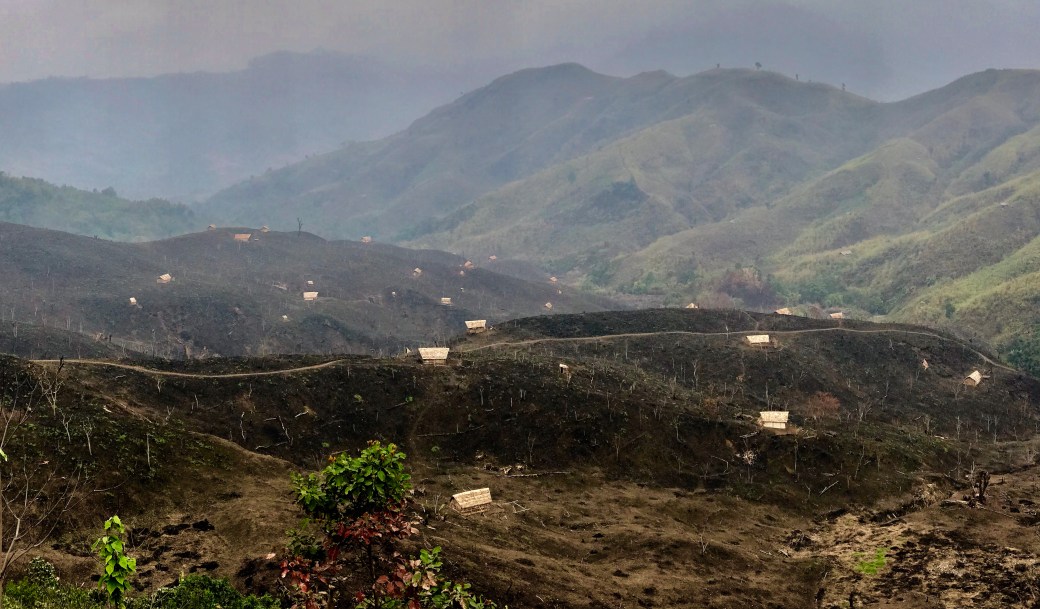 and after…
and after…
The Apatanis in Aranuchal Pradesh also have an old, but better, more sustainable method of agriculture. In their valley around the town of Ziro they grow rice on terraced rice paddies that serve at the same time as fish ponds.
As we came too early in the season, we were deprived of the emerald sight of green rice paddies that so many travelers extol. But our timing was perfect to meet the Apatani grannies, the last members of the tribe that still have their sweet faces traditionally tattooed. Some continue to also wear nose plugs.  By sheer luck we are in Ziro on Sunday and on Sundays the grannies meet for worship at their Donyi-Polo building.
By sheer luck we are in Ziro on Sunday and on Sundays the grannies meet for worship at their Donyi-Polo building.
Donyi-Polo is an indigenous animist religion, still practiced in many homes. Those homes that practice proudly fly a white flag with red flaming sun, though my understanding is that they are loosing out to Christianity. According to their religion all things originate from one source Keyum (nothingness). Donyi is Mother Sun and Polo is Father Moon, a ying-yang force. There are shamanist practices and animal sacrifice involved. Eggs are an important element and there are many bamboo altars in front of their houses and a big garden outside of the village full of them. 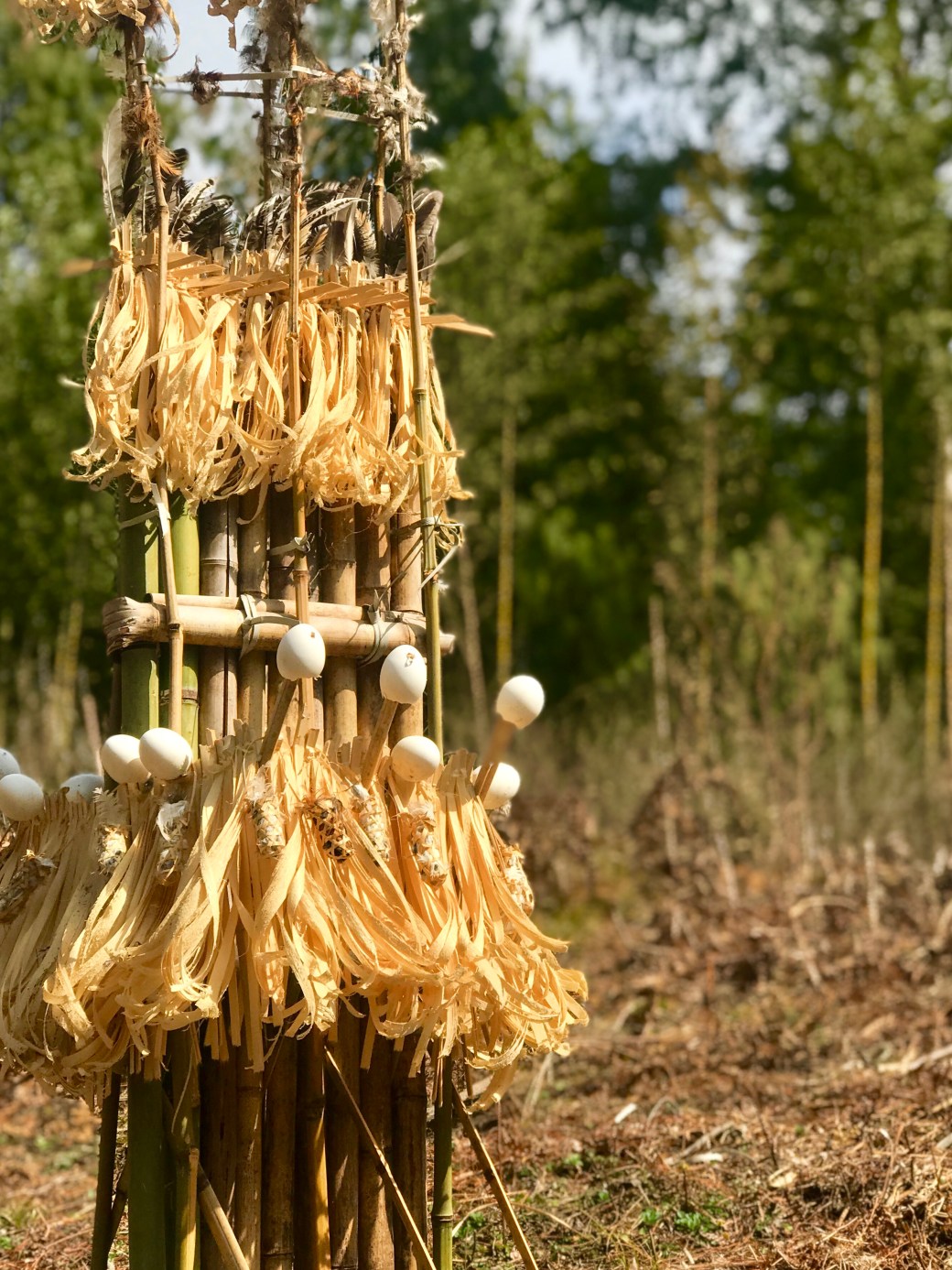 Bamboo is essential to their life and each family has its own bamboo grove protected by a fence.
Bamboo is essential to their life and each family has its own bamboo grove protected by a fence. 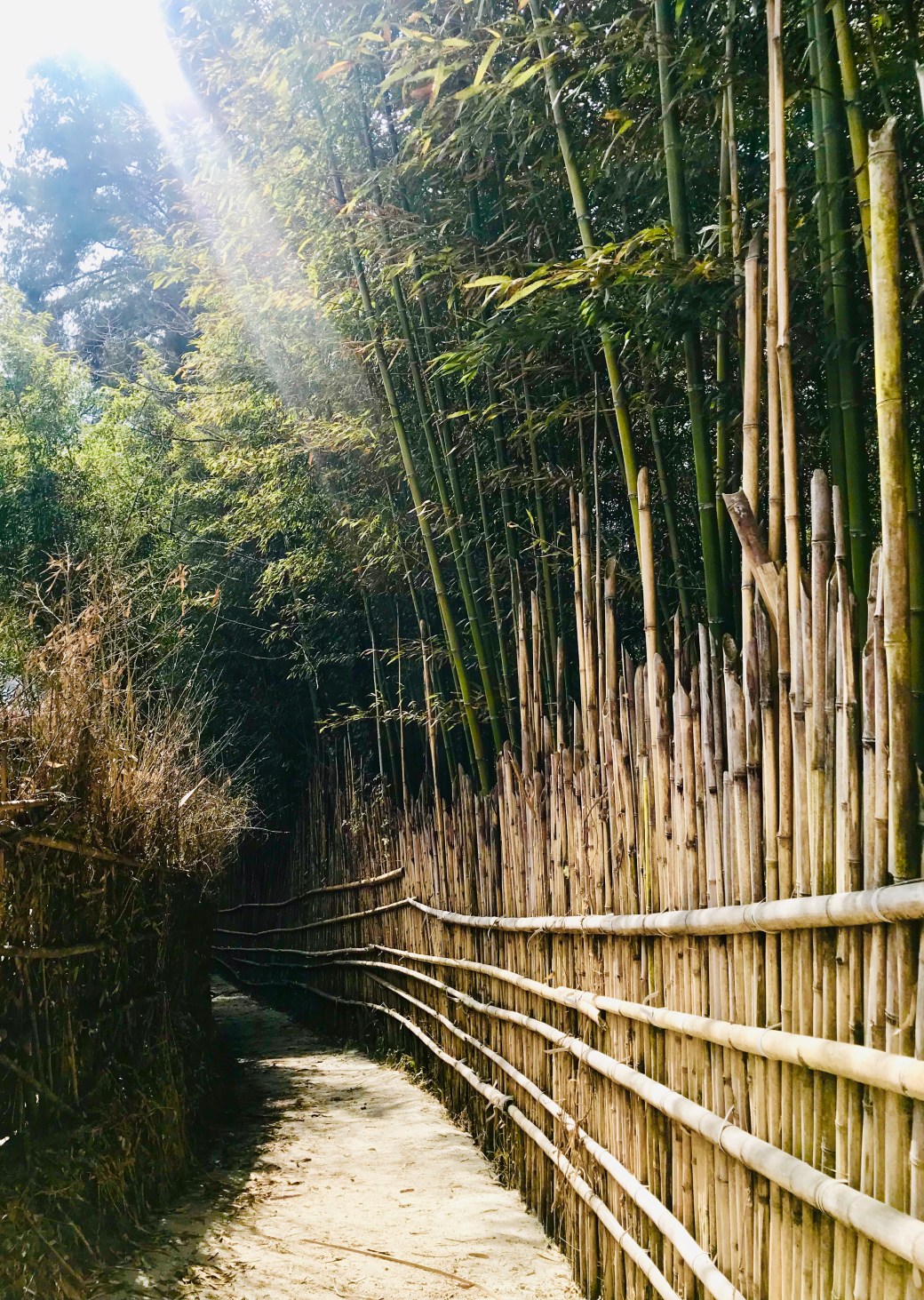 It was my big concern how to get some photos of the grannies without sticking my iPhone into their faces and offending them.
It was my big concern how to get some photos of the grannies without sticking my iPhone into their faces and offending them.  But the grannies were so fun and welcoming.
But the grannies were so fun and welcoming.  One version of the origin of the tattoos and nose plugs is that of beautiful Apatani women being intentionally made ugly so the neighboring tribes would not kidnap them, but a number of local people we talked to strongly denied this. It is interesting that the same kidnaping reason is cited for the origin of big lip plates in Mursi tribe in Ethiopia.
One version of the origin of the tattoos and nose plugs is that of beautiful Apatani women being intentionally made ugly so the neighboring tribes would not kidnap them, but a number of local people we talked to strongly denied this. It is interesting that the same kidnaping reason is cited for the origin of big lip plates in Mursi tribe in Ethiopia.  Well, beauty is indeed in the eye of a beholder and in the perception of the tribe. People in many cultures from around the world tattoo their bodies and faces.
Well, beauty is indeed in the eye of a beholder and in the perception of the tribe. People in many cultures from around the world tattoo their bodies and faces.
 Guna lady, Panama
Guna lady, Panama Burmese girl with thanaka paste designs
Burmese girl with thanaka paste designs
For example American Mojave Indians and Maori have women chin tattoos. For them it was not a question of beauty, but of their tribal identity. The chin tattoo called moko kauae in Maori is considered a physical manifestation of their identity and some Maori women of today are going back to their roots and having their chins tattooed.
In the Konyak tribe it is the men who have the facial tattoos. (Women have them only on their legs). 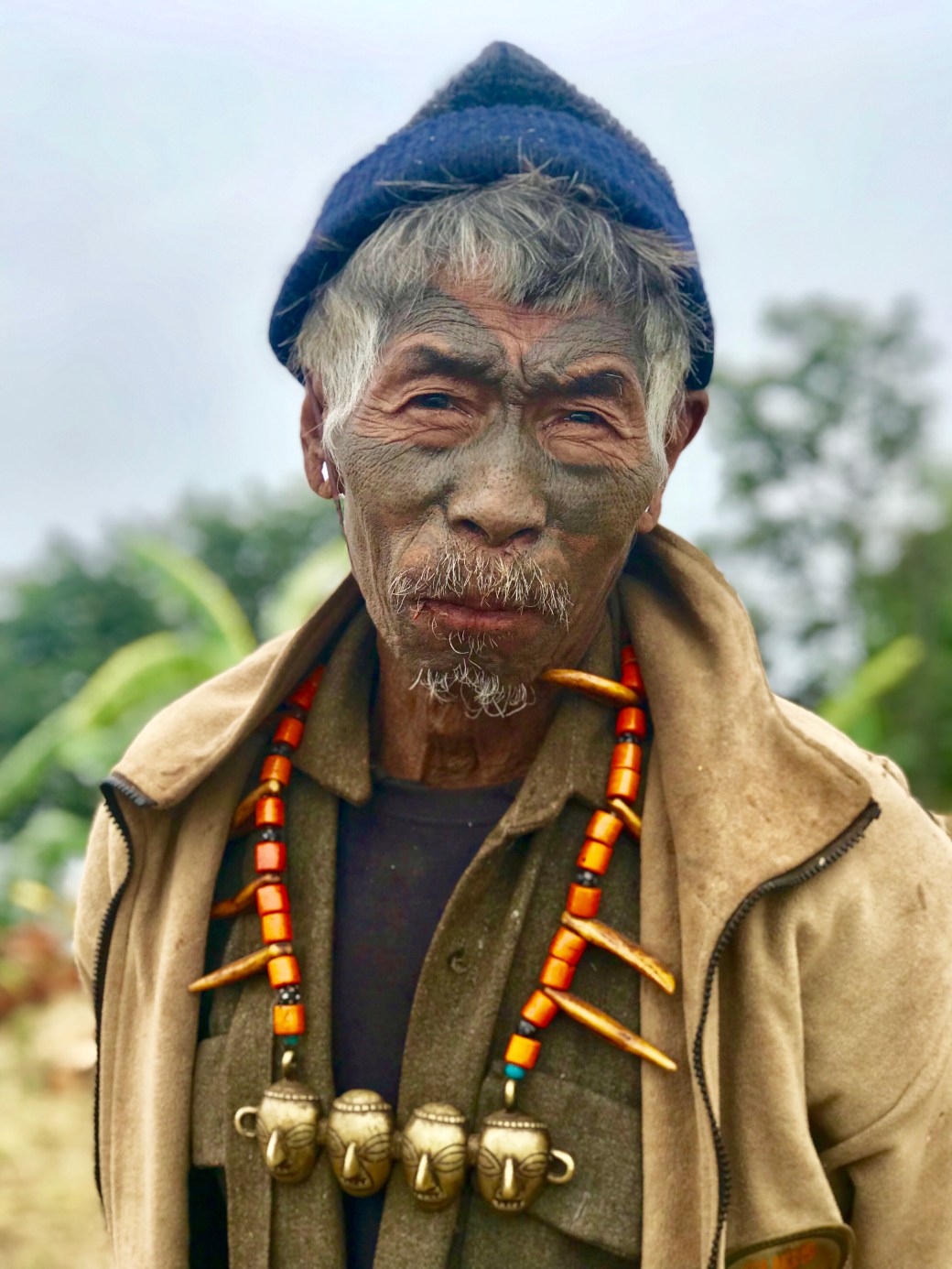 Just as with the Apatani grannies, this dozen or so grandpas are the last of their tribe. The tattooing tradition dies with them.
Just as with the Apatani grannies, this dozen or so grandpas are the last of their tribe. The tattooing tradition dies with them.
Once you have been to a number of tribal areas it becomes clear how much is similar, despite vast geographical distances between cultures.
Of course when one only has natural materials such as straw and wood or bamboo, one makes similar implements and structures.  We chanced upon a number of re-roofing projects in the Konyak villages. The smoke and soot filled palm leaf bunches are replaced with a fresh batch and the male populations of the whole village turns out to help. Seemingly without any directions they all do what they do best and within a day the roof is spanking brand new.
We chanced upon a number of re-roofing projects in the Konyak villages. The smoke and soot filled palm leaf bunches are replaced with a fresh batch and the male populations of the whole village turns out to help. Seemingly without any directions they all do what they do best and within a day the roof is spanking brand new.  But it is also the social aspect of the society that draws parallels. The rituals of life and death, and the celebrations of weddings have similar details. The music and singing is a strong element in all of these cultures and often hauntingly beautiful universal language of humanity.
But it is also the social aspect of the society that draws parallels. The rituals of life and death, and the celebrations of weddings have similar details. The music and singing is a strong element in all of these cultures and often hauntingly beautiful universal language of humanity.  Circle of Toraja funeral singers, island of Sulawesi, Indonesia
Circle of Toraja funeral singers, island of Sulawesi, Indonesia  Circle of Angami singers in Nagaland
Circle of Angami singers in Nagaland
Another area of tribal parallels was the prevalence of pigs and buffalos. Pigs and piglets were seen everywhere and pork dishes were numerous on every menu. Seeing the bull horns on some of the morungs –young men’s village dormitories, we immediately thought of the island of Sumba in far away Indonesia and their horn bedecked homes. 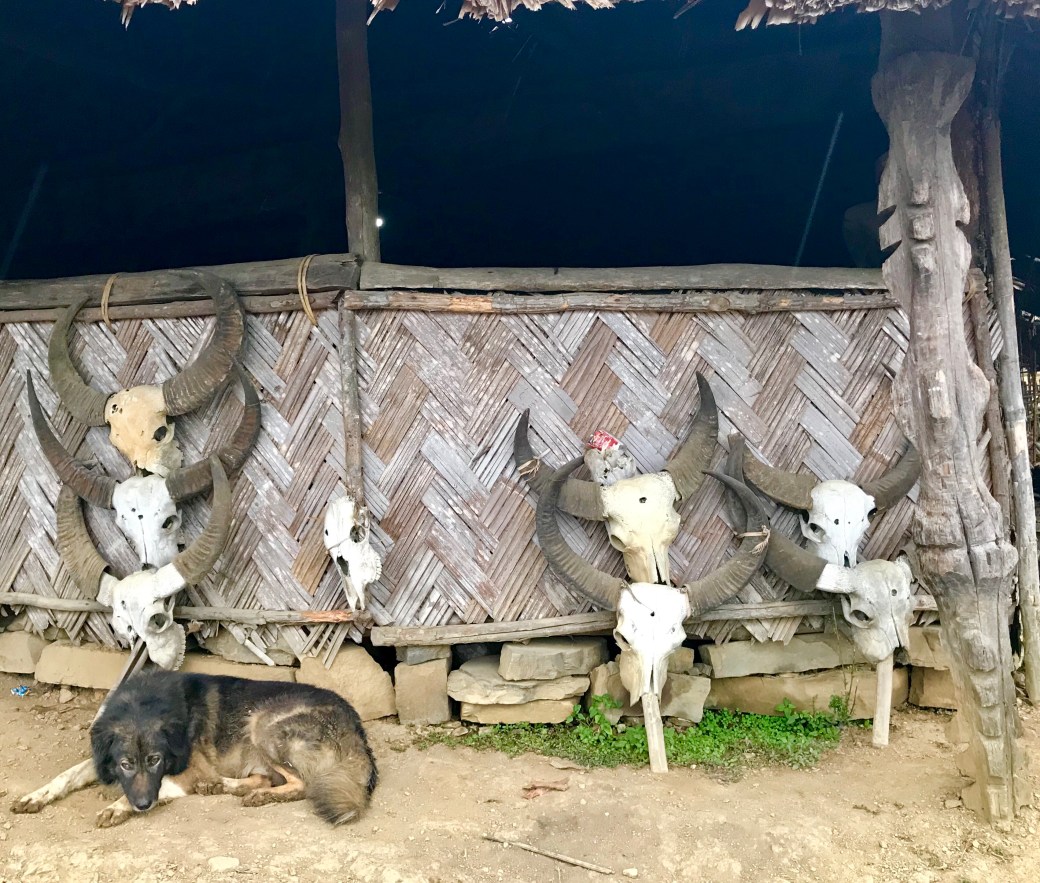 Of even bigger importance to the Nagas (and their neighbors) is mithun, a semi wild sacred animal, similar to buffalo. It roams freely in the forest and comes to its owner every now and then for a lick of salt. Mithun are not used for consumption but as proof of wealth at weddings and for ritual slaughter at funerals.
Of even bigger importance to the Nagas (and their neighbors) is mithun, a semi wild sacred animal, similar to buffalo. It roams freely in the forest and comes to its owner every now and then for a lick of salt. Mithun are not used for consumption but as proof of wealth at weddings and for ritual slaughter at funerals.  Morungs usually shelter a large drum, fashioned from a big tree and hollowed out. It used to be a means of communication for the clan or tribe. Different sounds were pounded out according to the message: birth or death or enemy at the gate. Wars with the neighboring tribes were frequent and raids on villages happened often. Nagas are infamous for having been one of the last headhunters. The most impressive drum we found was an enormous and beautifully decorated drum in Aliba village. It took 8000 people to create this piece of art. They had to drag and roll the log by hand far from the forrest.
Morungs usually shelter a large drum, fashioned from a big tree and hollowed out. It used to be a means of communication for the clan or tribe. Different sounds were pounded out according to the message: birth or death or enemy at the gate. Wars with the neighboring tribes were frequent and raids on villages happened often. Nagas are infamous for having been one of the last headhunters. The most impressive drum we found was an enormous and beautifully decorated drum in Aliba village. It took 8000 people to create this piece of art. They had to drag and roll the log by hand far from the forrest. 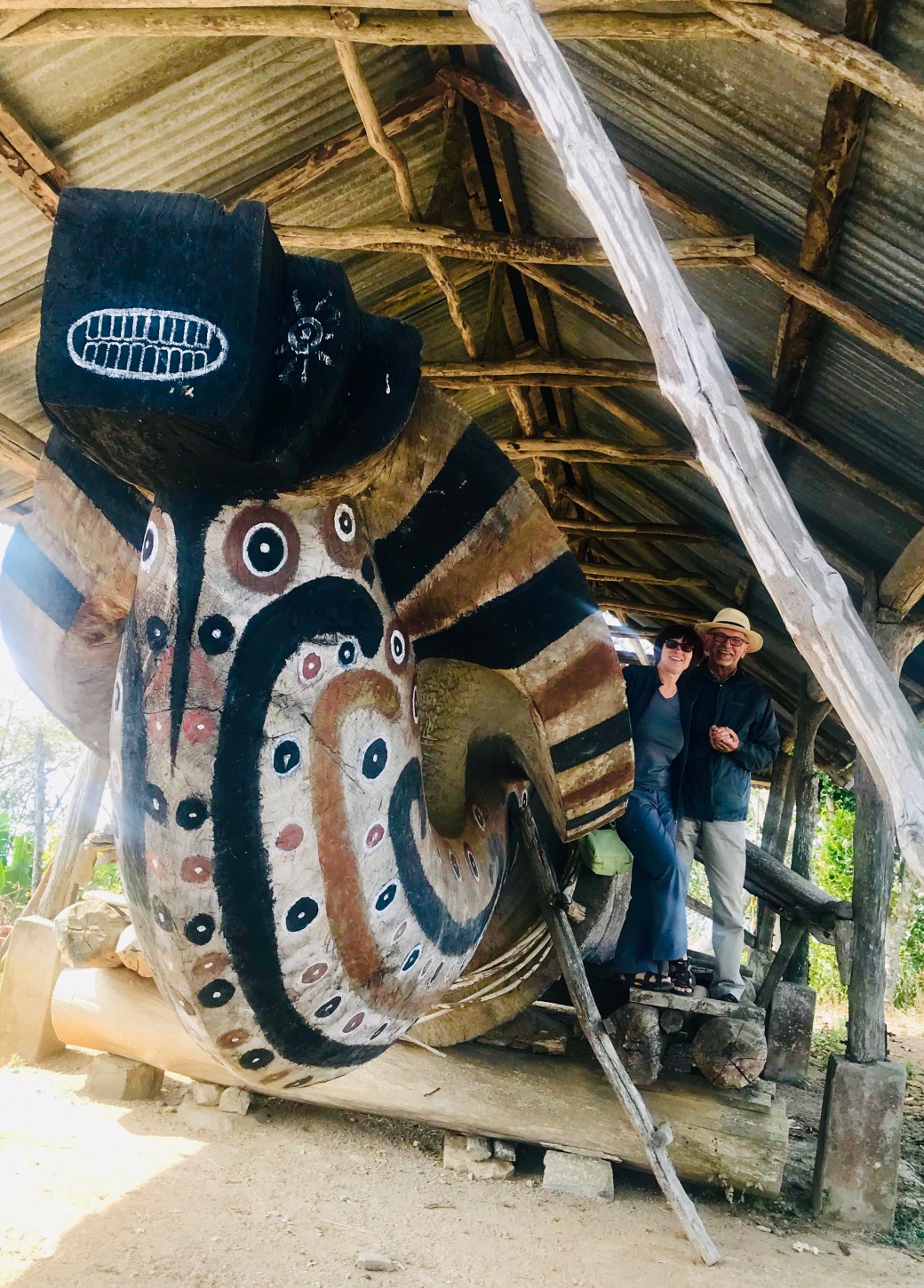 We felt quite little next to it and were reminded of giant totems of the Canadian Pacific North West tribes.
We felt quite little next to it and were reminded of giant totems of the Canadian Pacific North West tribes.
Textiles are of course my biggest tribal love. Even though we are running out of empty wall space in our dwellings I can’t help but get some straight from the hands of skillful weavers. 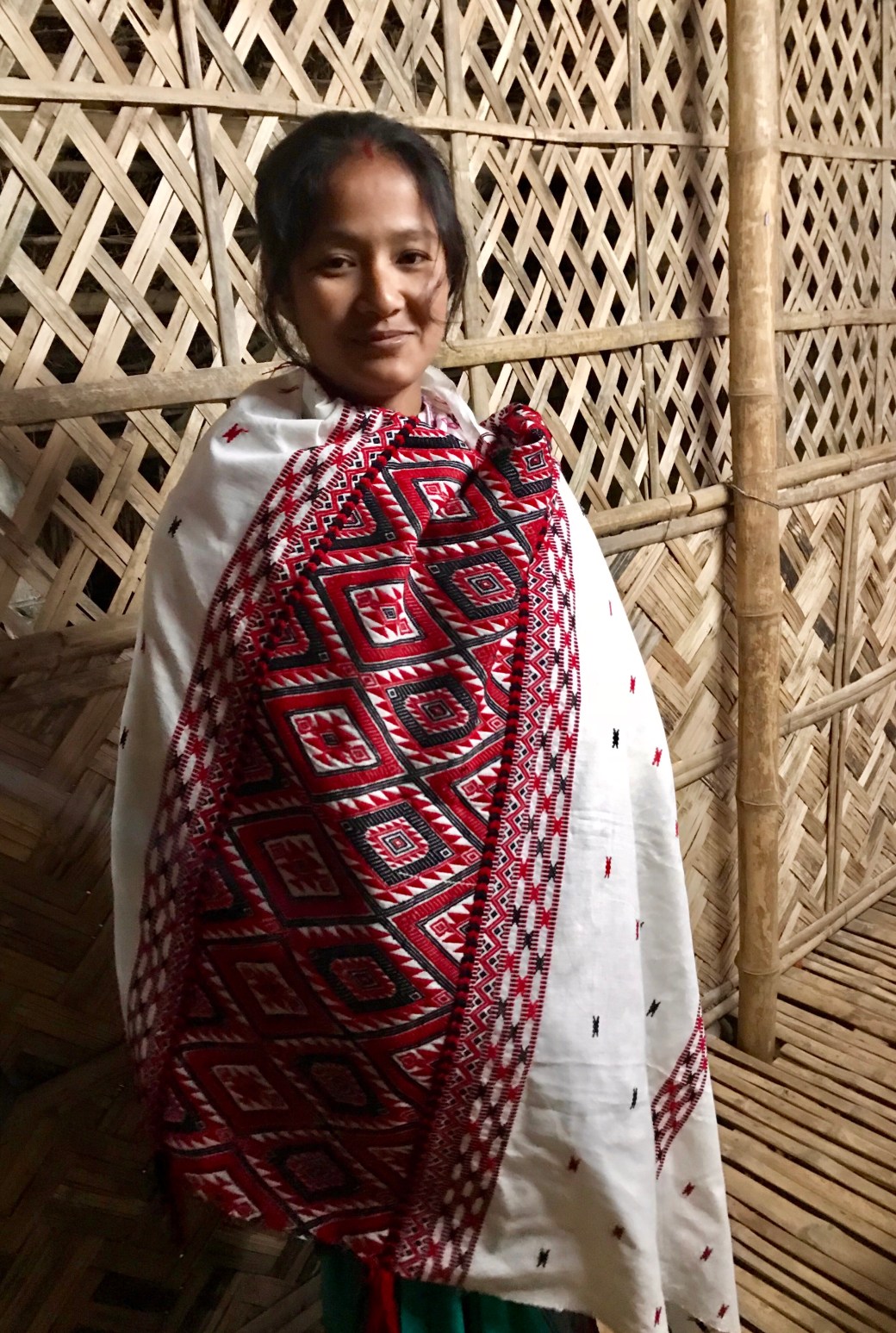 This one was made on Majuli island in Assam, where red and white reign supreme.
This one was made on Majuli island in Assam, where red and white reign supreme. And this one was made by this weaver’s grandmother.
And this one was made by this weaver’s grandmother. 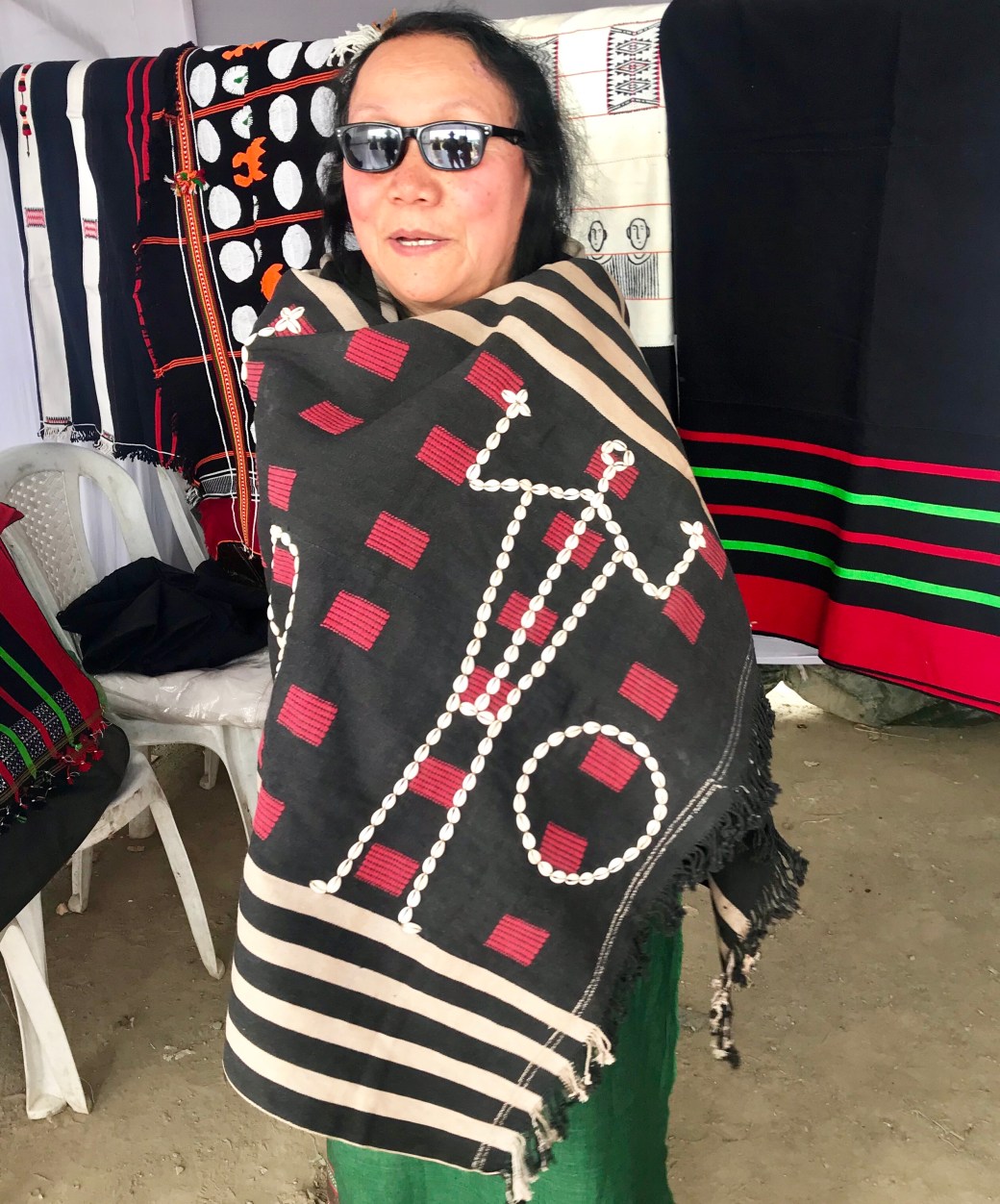 Only later at a museum I found out it was a special piece worn in the olden days only by rich men – clan leaders. To imbue it with some feminine power I wore it to the Sekrenyi Festival of the Angami tribe.
Only later at a museum I found out it was a special piece worn in the olden days only by rich men – clan leaders. To imbue it with some feminine power I wore it to the Sekrenyi Festival of the Angami tribe.  We planned our trip so that we would end it at this festival, but we had no clue that the one contact we had in the area was the wife of the Angami chief’s son. Hekani is a University of San Francisco educated lawyer and runs a youth non profit in the capital Kohima. Well, how lucky can two travelers be?! We were treated to a special dinner of local delicacies at their home
We planned our trip so that we would end it at this festival, but we had no clue that the one contact we had in the area was the wife of the Angami chief’s son. Hekani is a University of San Francisco educated lawyer and runs a youth non profit in the capital Kohima. Well, how lucky can two travelers be?! We were treated to a special dinner of local delicacies at their home  and were guests of honor at their village celebrations.
and were guests of honor at their village celebrations.  We were even loaned two lovely young interns who further gave us invaluable insights and answered truthfully our myriad of questions. They regaled us with the stories of their ancestors, including slave owning grandpas with numerous wives from different tribes.
We were even loaned two lovely young interns who further gave us invaluable insights and answered truthfully our myriad of questions. They regaled us with the stories of their ancestors, including slave owning grandpas with numerous wives from different tribes.  The roads through North East India were arduous at best and tortuous at worst. But when you looked out the window you nearly forgot about the bumpy ride. I especially fell in love with the beautiful, green, ever present Naga hills. In the overpopulated world of Asia I will miss them very much.
The roads through North East India were arduous at best and tortuous at worst. But when you looked out the window you nearly forgot about the bumpy ride. I especially fell in love with the beautiful, green, ever present Naga hills. In the overpopulated world of Asia I will miss them very much. 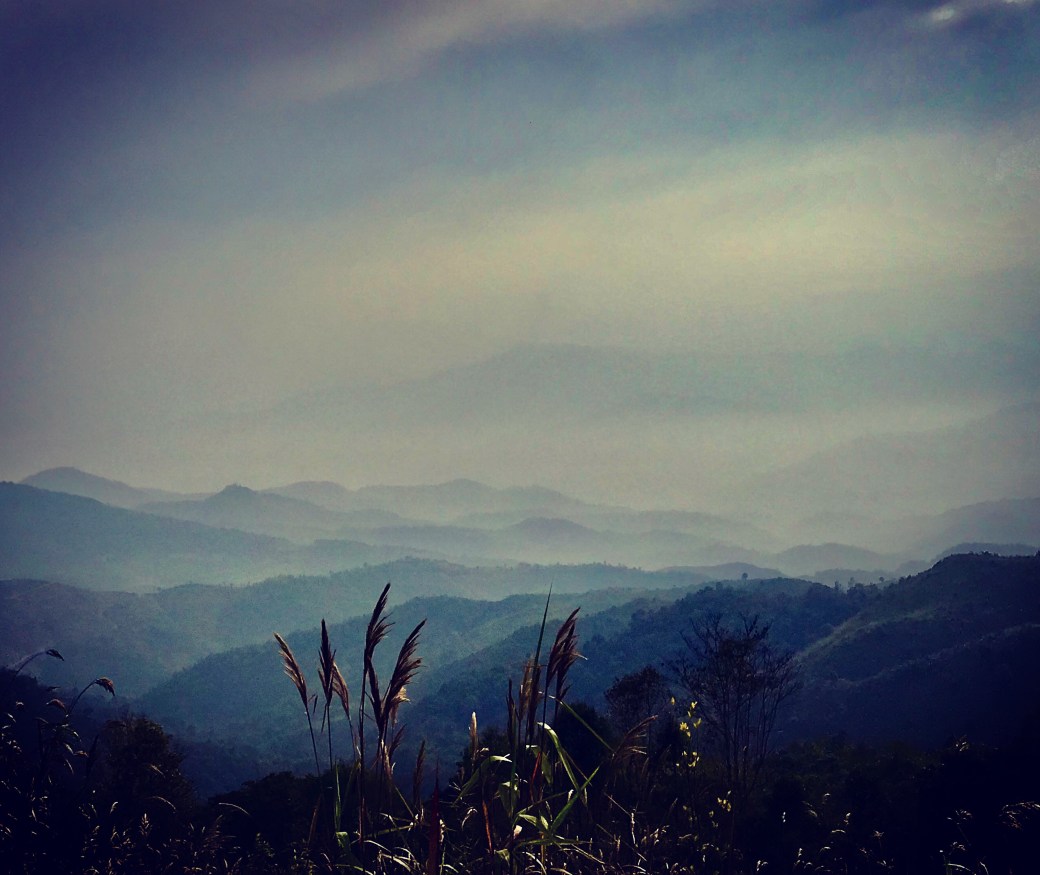
P.S. In case you are planing a trip to the tribes we highly recommend hiring a driver and guide through http://www.theholidayscout.com. Couldn’t have done it without them!

Your best blog so far. I loved the comparisons between the various tribes around the world that you have visited. Were the Ethiopian Lips really stretched that big?!
LikeLike
Yup. This is our own photo and I have the lip plate hanging on our wall above the fireplace!
LikeLike
after awhile took again the time and read all the way through. must be very thrilling for you, all those pristine and unique encounters. the first photo is amazing!!!
LikeLike
Your journey through east India is absolutely fascinating. I’m seeing parts of the world I will never experience in person but you make it personal and I can almost feel and touch the photos as real. Thank you for including me on your journey through this exquisite place of happy faces and beautiful scenery.
LikeLike
Your stories and photos are amazing. I am learning so much from your travelogs And pictures.
LikeLike
Thank you. We love to learn along the way and pass it on.
LikeLike
This is fascinating. I thought tribes were only abstract. You make it so real. I showed my son the pictures. He was fascinated with the one of Mirek shaking the man’s hand with the tusks and sticks etc… I have to reread it!
LikeLike
WOW! Truely amazing, looks like you were able to see it all! Love your amazing photos, as always!
LikeLike
It is a small world. When I was young and living in Alaska Eskimo women often had a small tattoos on their chins to show the number of children. At one point in their history they had come across the Bering Straight from Asia. Eskimos didn’t have tribes due to the climat and few children/low fertility. Over long periods of time our environment defines us. I thought that the red and white weaving were gorgeous.
LikeLike
Love the photos of your world travels… especially of the people you meet!
LikeLike